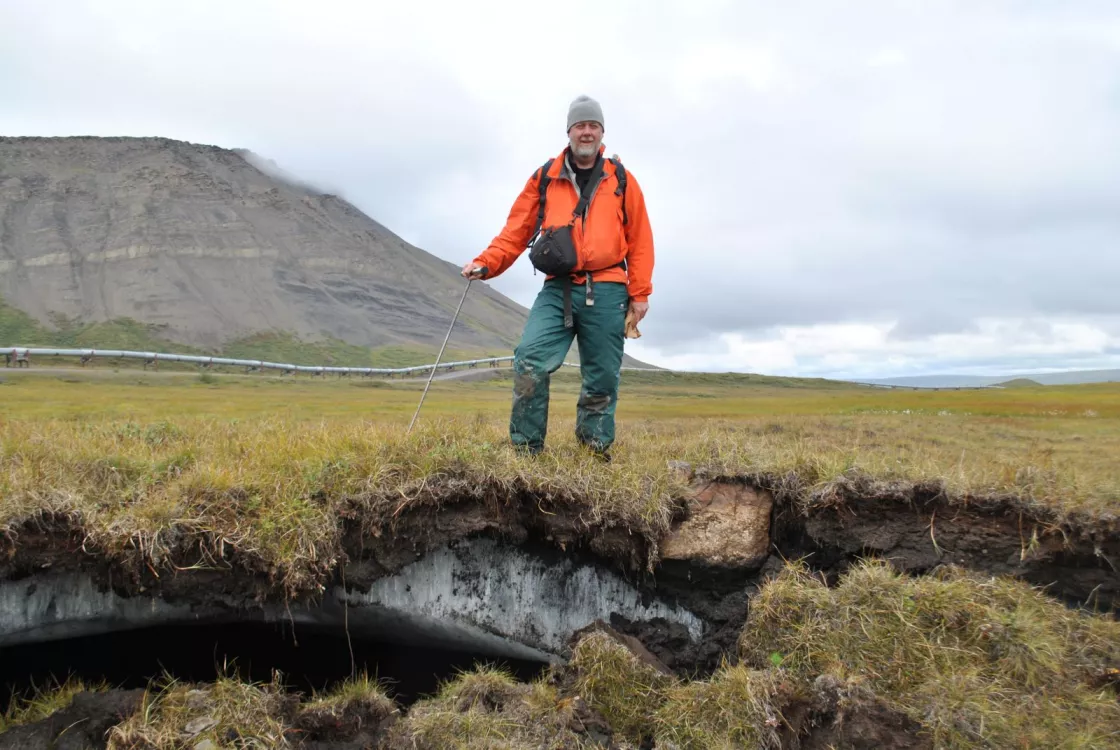The concentration of mercury in fish in Alaska’s Yukon River may exceed EPA mercury criterion by 2050 if greenhouse gas emissions that cause global warming are not constrained, according to new scientific research led by the National Snow and Ice Data Center’s (NSIDC) Kevin Schaefer. This first of its kind research estimates potential releases of mercury from thawing permafrost in high and low emissions scenarios. The researchers predict that by 2200, the mercury emitted into the atmosphere annually by thawing permafrost could compare with current global anthropogenic emissions under a high emissions scenario. Their results were published on September 16 in Nature Communications.
“If we can hit the Paris Accord target, we expect minimal impacts to mercury concentrations in fish and water. If we continue with unconstrained emissions, however, it is likely that we will see large increases in mercury concentrations,” said Schaefer. Emissions of these magnitudes could have a global impact. “What happens in the Arctic does not stay in the Arctic. The mercury emissions from thawing permafrost could persist for centuries, impacting the environment both locally and globally.”
Back in 2018, Schaefer and several of his colleagues found that permafrost soils store nearly twice as much mercury as all other soils, the ocean and the atmosphere combined. That work was funded by NASA as part of the Arctic-Boreal Vulnerability Experiment (ABoVE), a major effort to improve understanding of how climate change is affecting the Arctic ecosystems, and how those changes ultimately affect people and places in the Arctic and beyond. Now, the researchers have created a model—which relies in part on data from the Moderate Resolution Imaging Spectroradiometer (MODIS) instrument aboard NASA’s Terra satellite—to predict how mercury emissions from thawing Arctic permafrost will change under different global emissions scenarios.
The paper characterizes the release of mercury from thawing permafrost for high and low emissions scenarios based on two of the four Representative Concentration Pathways (RCPs) from the Intergovernmental Panel on Climate Change’s Fifth Assessment Report. The high emissions scenario (RCP 8.5) assumes unconstrained, ‘business as usual’ emissions, while the low emissions scenario (RCP 4.5) assumes emissions consistent with the Paris Agreement global target of two degrees Celsius of warming above pre-industrial levels.
The results indicate minimal impacts to mercury concentrations in water and fish for the low emissions scenario and large increases for the high emissions scenario. The high emissions scenario shows mercury releases to the atmosphere comparable to current anthropogenic emissions, with large increases to mercury concentrations in fish and water in the Yukon River. The low emissions scenario shows minimal releases to the atmosphere and small changes to mercury concentrations in fish and water. For the high emissions scenario, mercury concentrations could double in the Yukon River by 2100. For the low emissions scenario, mercury concentrations would likely increase by only about 14 percent and would not exceed EPA criterion by 2300.
“The thaw of permafrost due to climate change may release mercury as well as greenhouse gases like methane,” said Yasin Elshorbany of the University of South Florida St. Petersburg campus, a co-author on the study. “We need to comply with the Paris Accord target of two degrees Celsius. Otherwise, under a high emissions scenario, a significant portion of mercury will be released to the environment and it will continue for hundreds of years.”
The Yukon River is the fifth largest drainage basin in North America and home to one of the world’s longest salmon runs. It serves as an important commercial and subsistence fishery.
